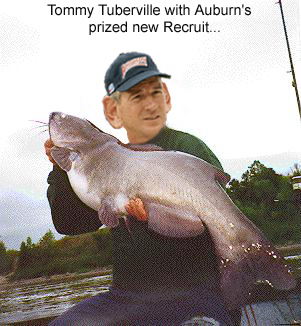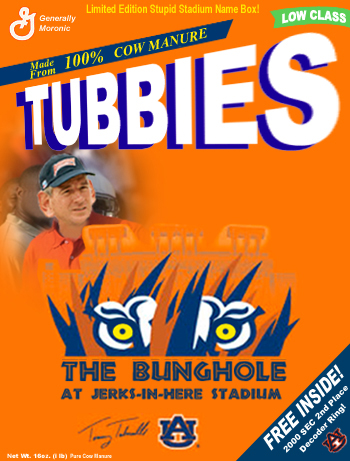4DaTide's photo gallery

|
4DaTide's photo gallery

|

|

|
The Associated Press
At a secluded compound near the Auburn campus, the catfish genome lab sits beside a field of 28 small ponds stocked with crossbred and genetically altered fish. The ponds are covered with netting and surrounded by high fences topped with barbed wire to prevent the inadvertent release of a genetically altered catfish into the environment.
Researchers Want Dumb Fish
With cultivation and processing operations both concentrated in the Black Belt, catfish gives a big economic boost to Alabama’s poorest counties.
Zhanjiang Liu, who heads Auburn’s catfish genome project, is described by fisheries department head John Jensen as “one of our best scientists.”
“He has put us in a leadership position as far as genomics,” Jensen said.
Liu grew up on a farm in central China. He attended a Chinese university, then came to the United States for graduate school at the University of Minnesota. His researchers come from around the world, but with heavy representation from China.
Auburn has already developed a hybrid of the blue and the channel catfish. Growers currently raise channel catfish, but the hybrid fish are more resistant to disease and can survive in low-oxygen water.
They also swim higher in the water, like blue catfish, instead of staying at the bottom of the pond, like channel cats. That makes them easier to catch.
“We want catfish that are dumber so they are caught more easily,” Jensen said. Channel catfish avoid nets at harvest time, so the harvest takes longer and requires more effort.
Grafting Genes During Fertilization
The easy-to-catch hybrids, however, are difficult to produce. Channel cats and blues don’t naturally breed with each other. Genetic engineering could allow scientists to create a species with desirable genes of both fish.
When scientists understand which catfish genes are associated with resistance to disease or with rapid growth, they can use DNA to identify the best fish and breed them. They could also graft the desirable genes onto a catfish’s DNA during the fertilization process.
When a new batch of mapped genes is posted, Liu gets inquiries from researchers around the world interested in his findings. “You can sense the impact,” Liu said, “It ricochets around the globe.”

|